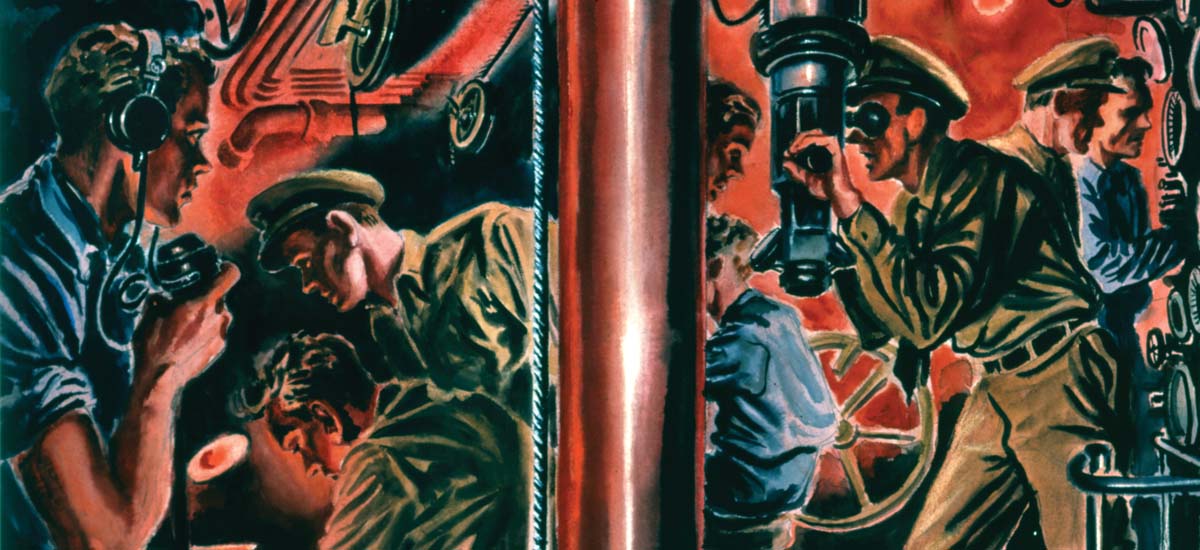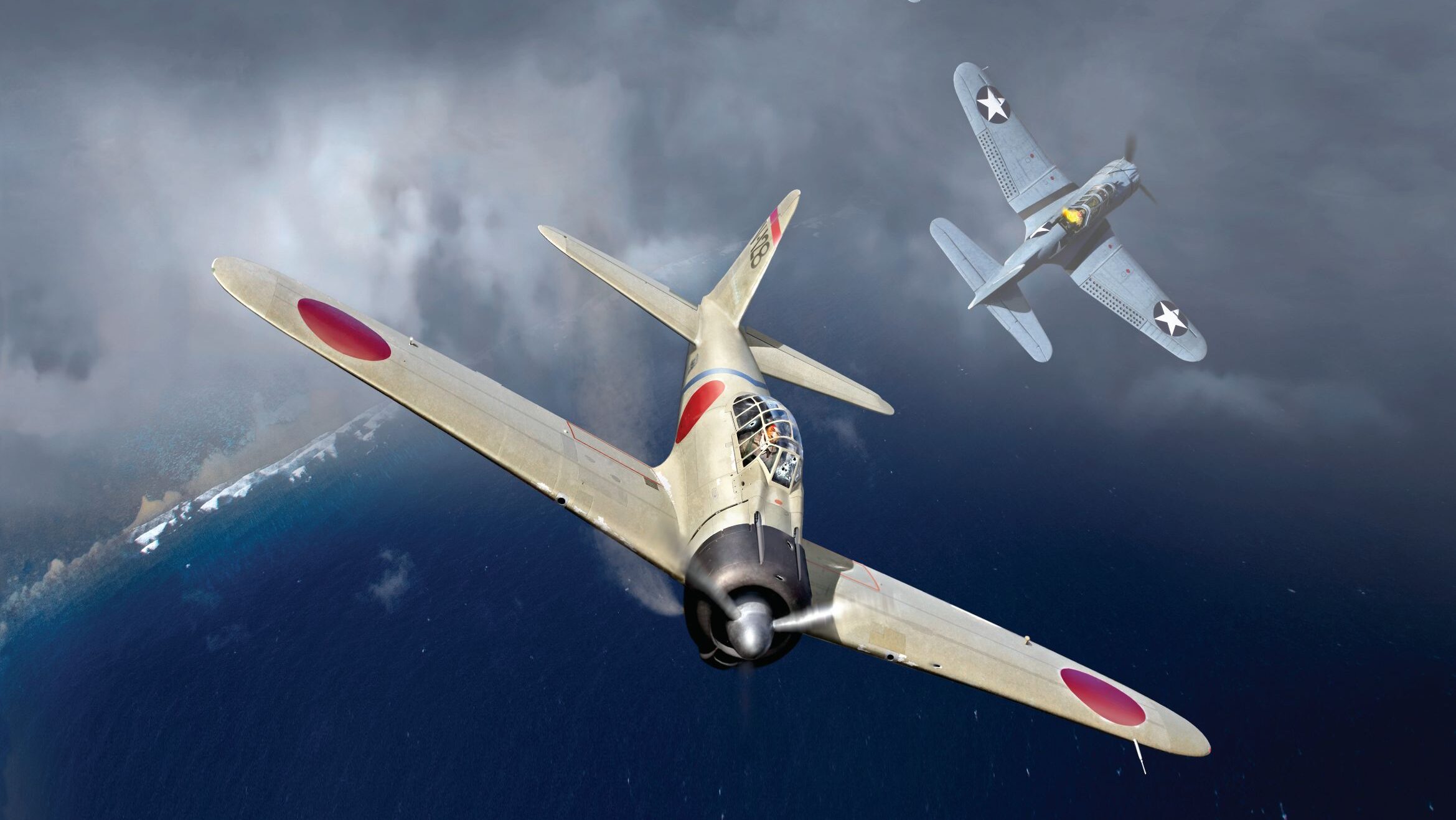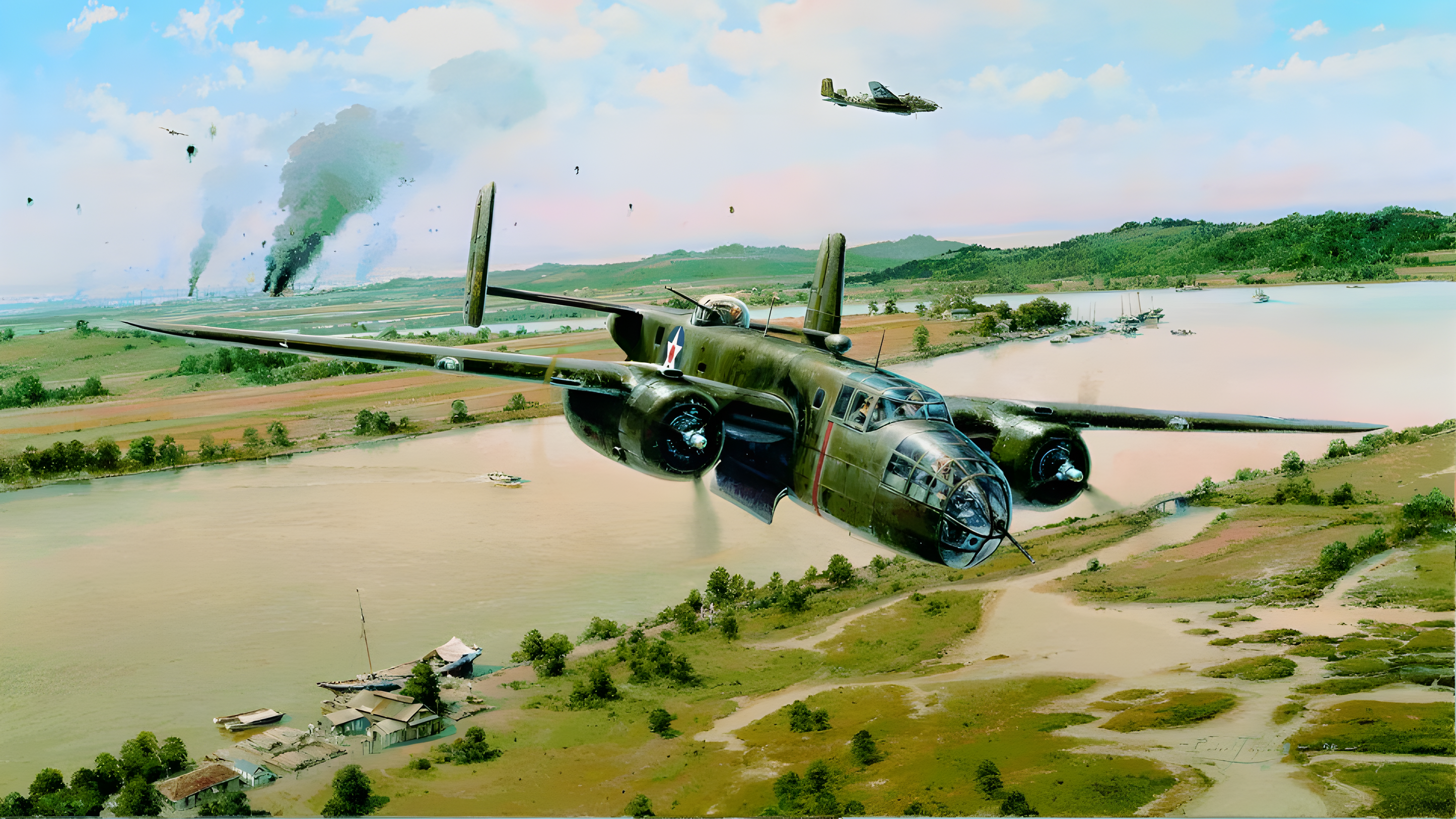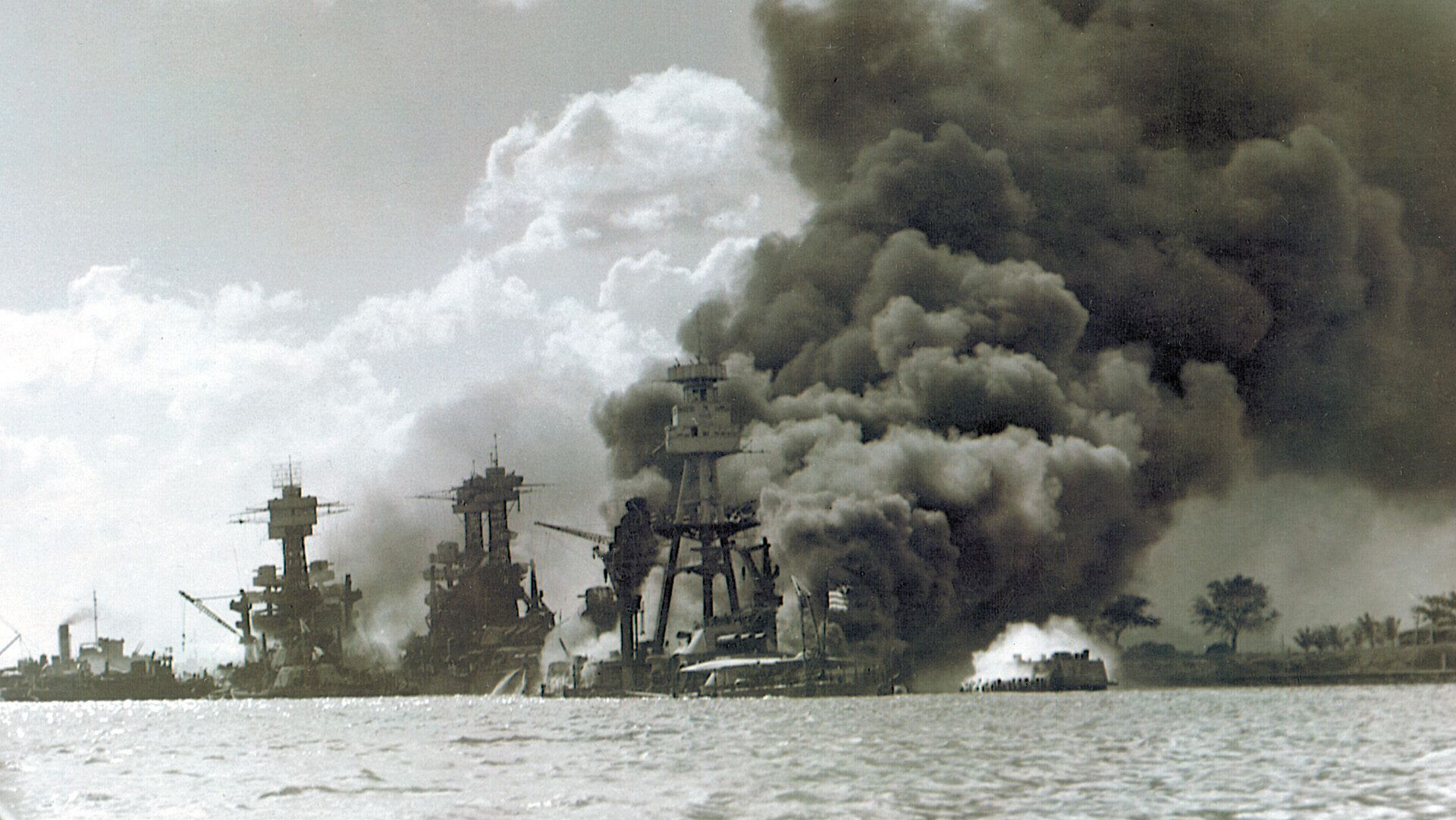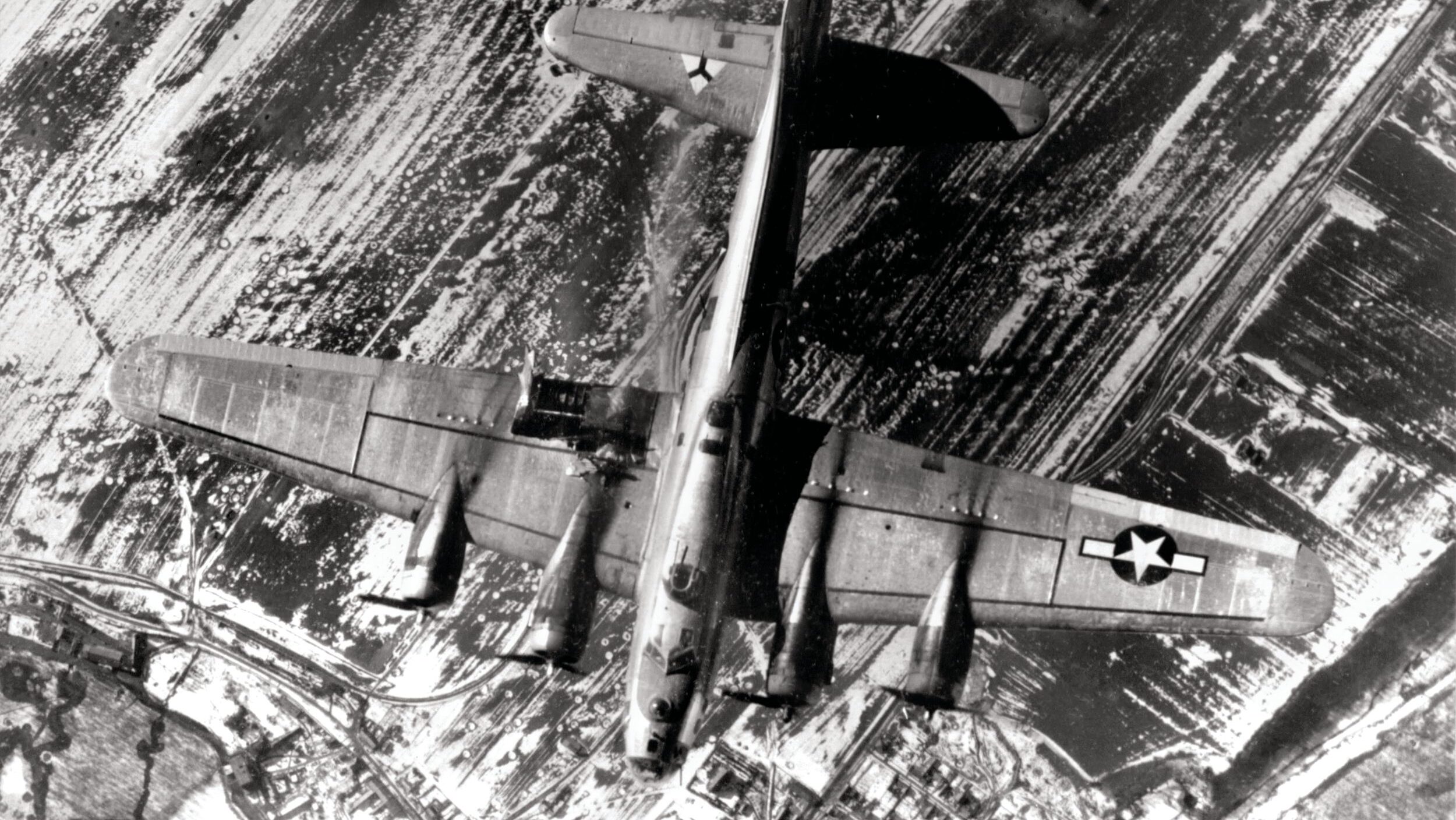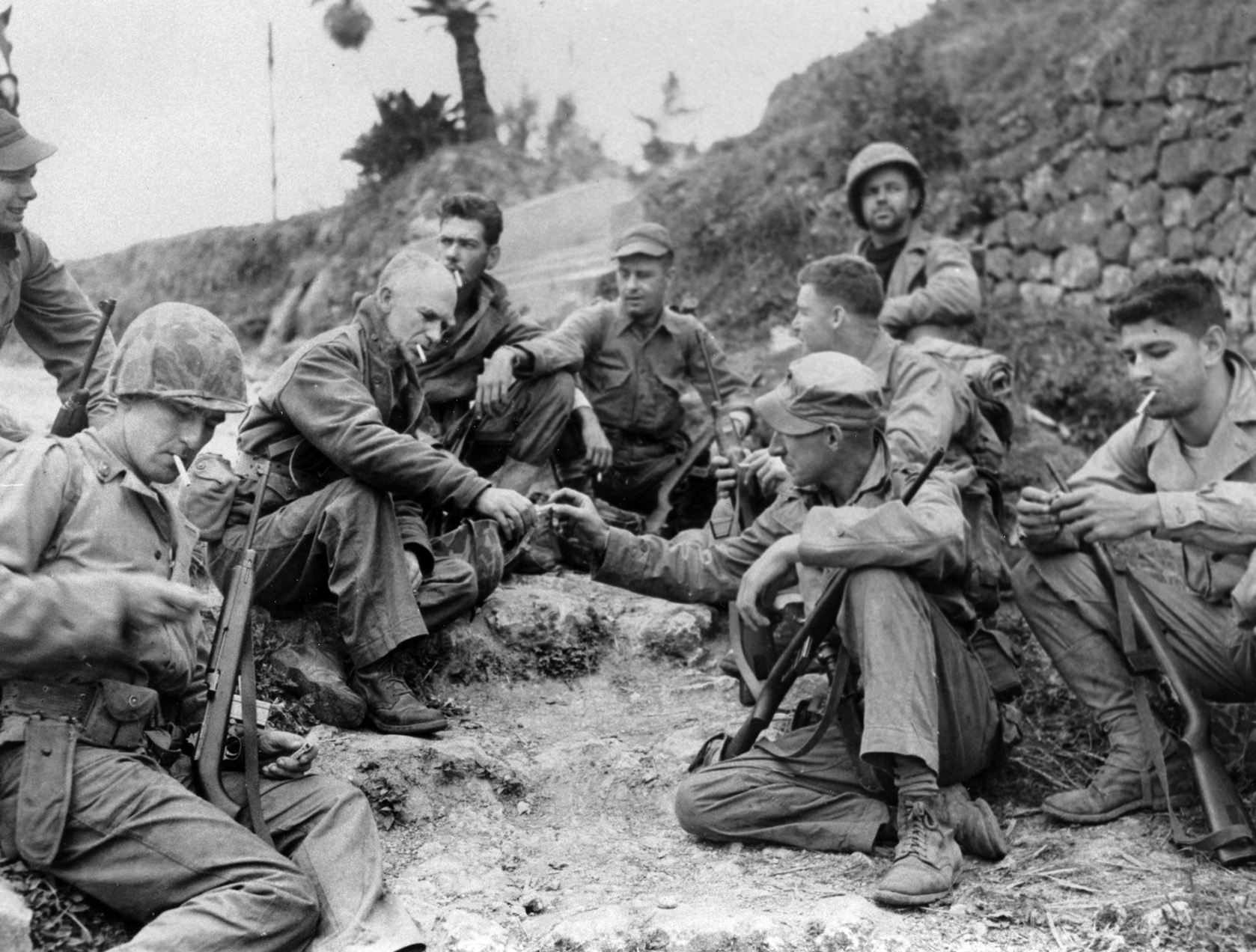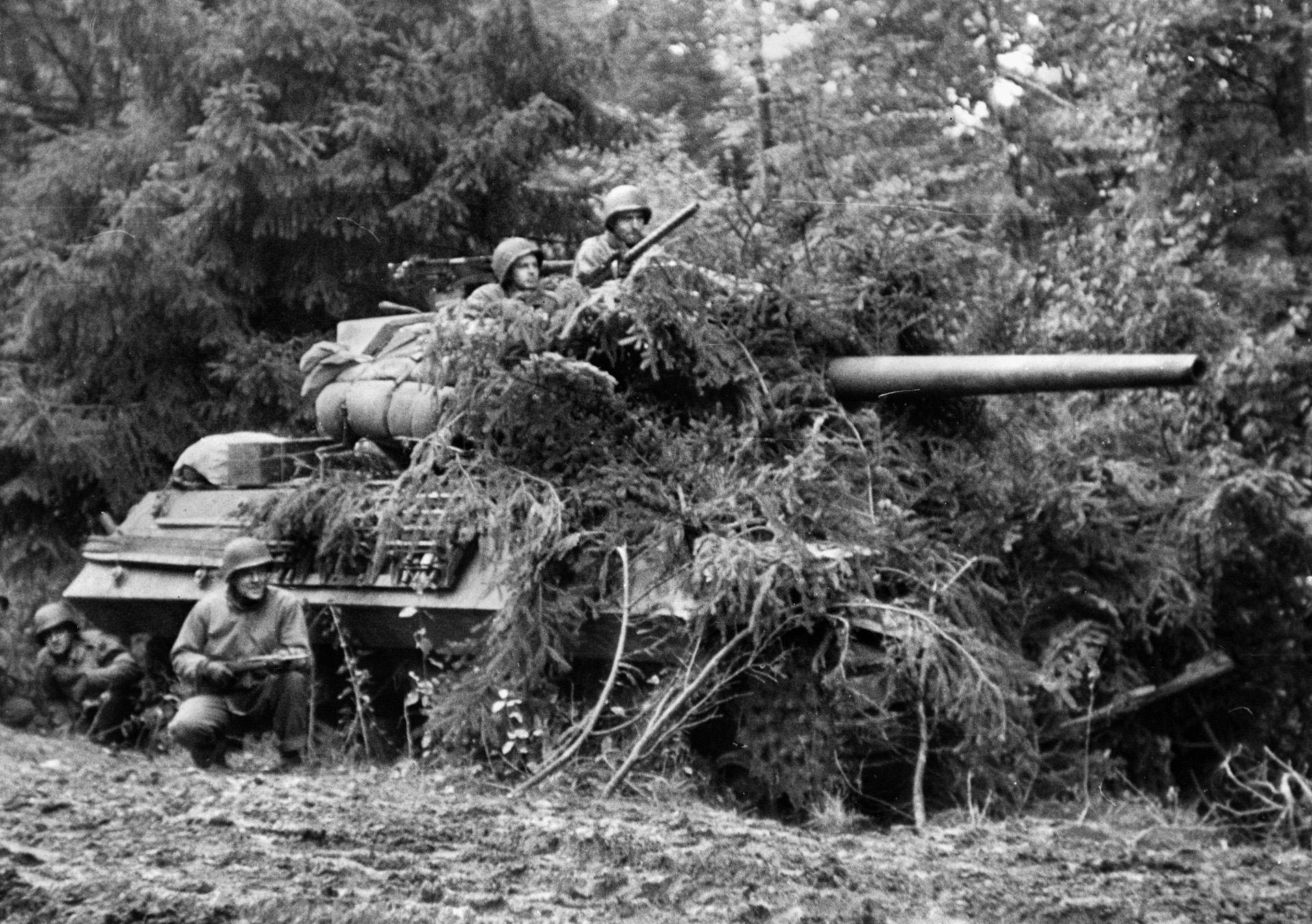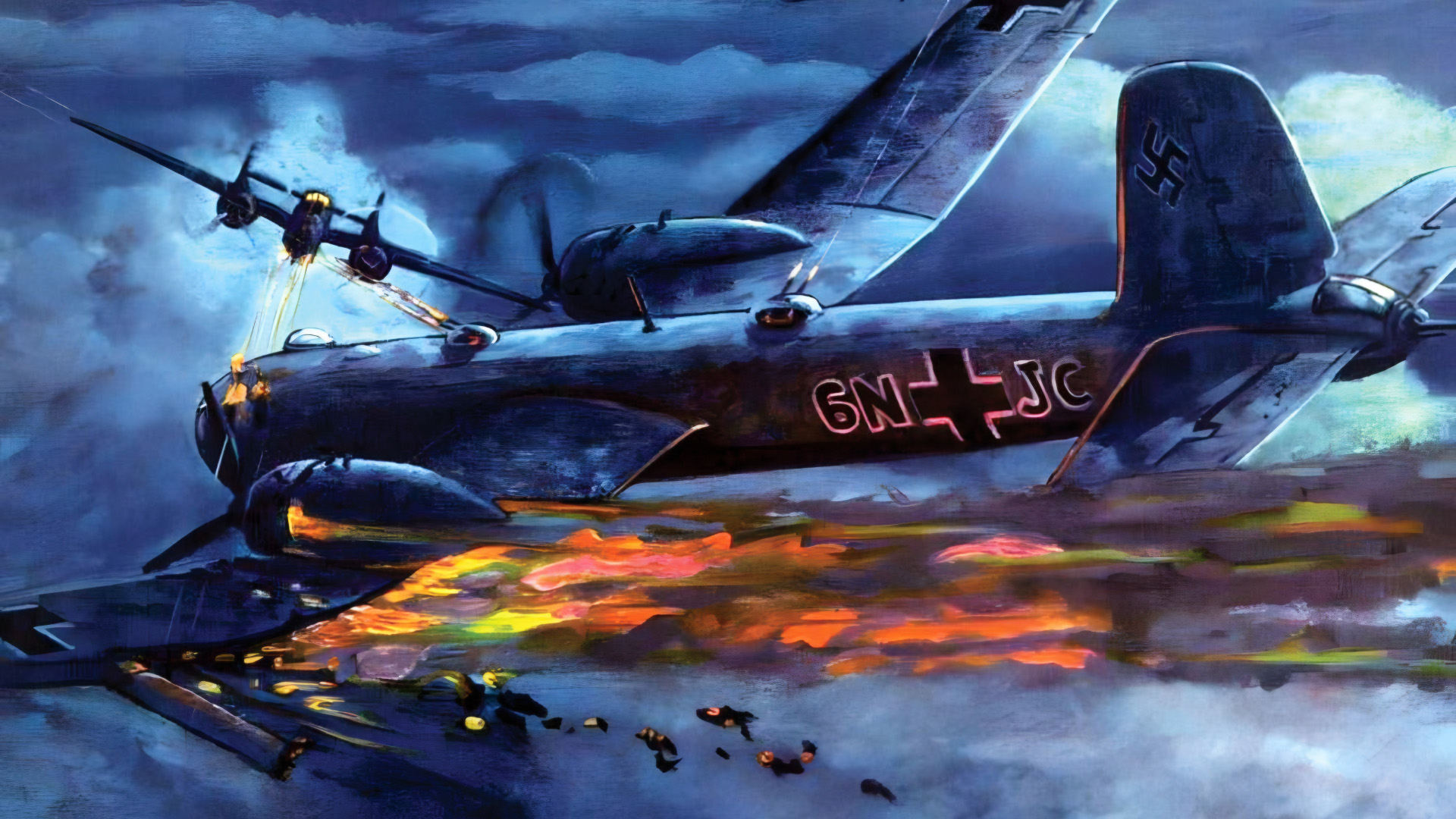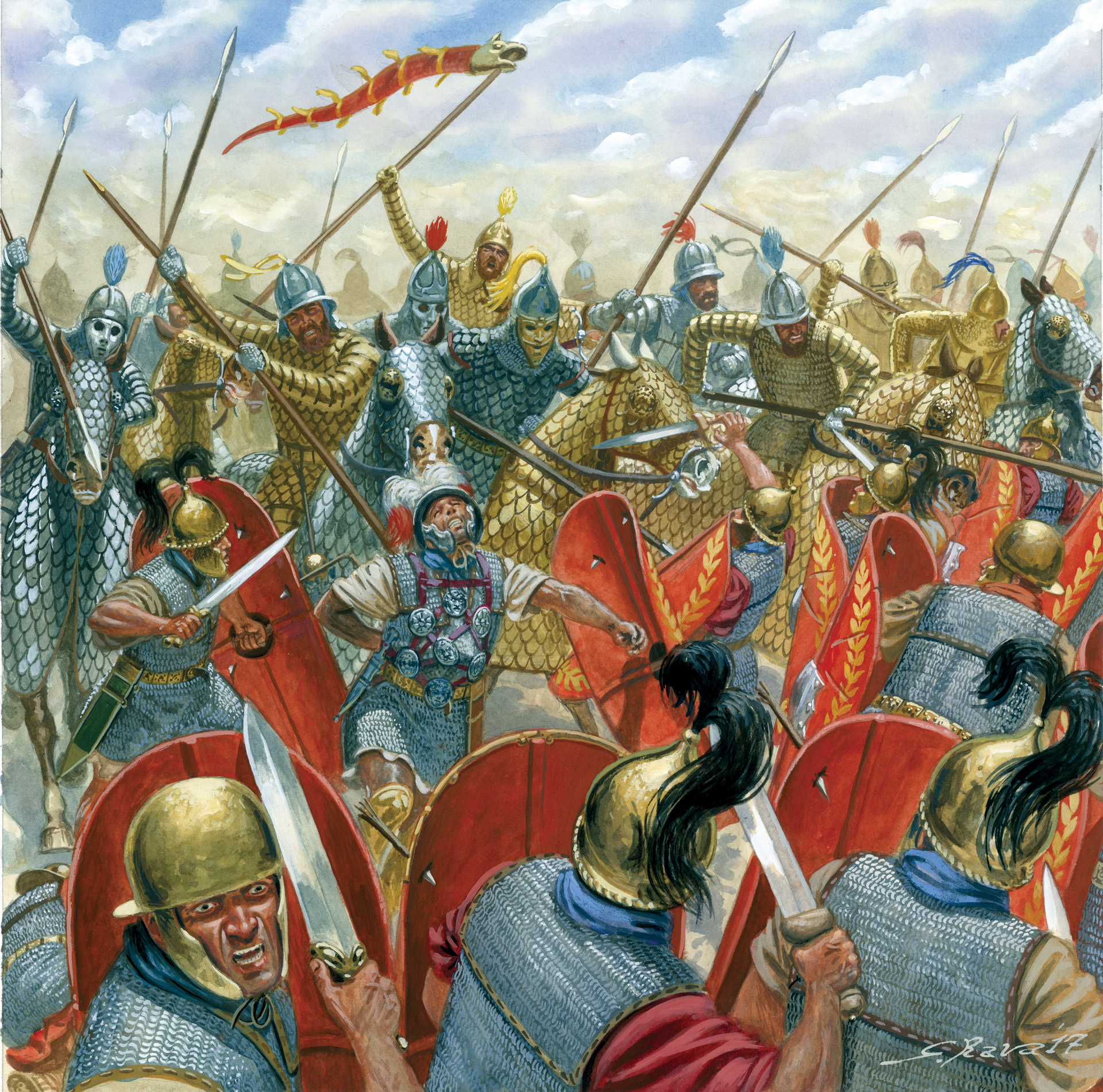By Chace V. Howland
“Thornton! Go let the captain know he’s needed in the conning tower.” Nineteen-year-old Quartermaster Third Class Ed Thornton from Three Notch, Alabama, scurried to the conning tower hatch and slid down the ladder into the control room. Through the control room and into the forward battery, Thornton hustled along the dimly lit narrow passages to Lt. Cmdr. Eli Thomas Reich’s small stateroom. The 31-year-old captain was sleeping off the bouts of frustration afflicting him and his crew on the Balao-class USS Sealion (SS-315). For 10 days, Sealion had patrolled the northern section of the Formosa Strait—an expressway for Japanese merchant and war ships—without any action except for a surface gun battle with a trawler, which Sealion failed to sink. The mood aboard USS Sealion was about as gray as the bulkheads that confined the submariners.
As Thornton approached Reich’s stateroom, he could see that the green privacy curtain was closed. Thornton remembered being told to never wake the captain by touching him. Pulling aside the green curtain, Thornton quietly poked his head in. “Captain…” Reich was propped up on his elbow before Thornton could get the words out. “You’re needed in the conning tower.” Without hesitation, Reich sprang from his bed, stepped into his slippers, and headed for the conning tower.
Lieutenant Clayton Brelsford and the radar officer Danny Brooks were hovering over the radar when Reich arrived wearing powder-blue pajamas. Twenty minutes after midnight, November 21, 1944, Reich learned that enlisted torpedoman Bill “Moose” Hornkohl was on radar watch when the pips had flashed on the radar screen.
Tightening the Noose Around the Central and Southwest Pacific
Reich was incredulous. Forty-four thousand yards was simply too far. The Xueshan Mountain Range in northern Formosa stands close to 13,000 feet high. The SJ radar signal must be reflecting off the Formosan mountains, thought Reich. A couple of nights prior, USS Sealion’s radar had mistaken land for Japanese naval vessels. Had it happened again?
Reich deemed it prudent to continue tracking and told his men he would return to the conning tower shortly. Reich rushed back to his stateroom to change (powder-blue pajamas were not appropriate attire for a commanding officer in battle).
Admiral Takeo Kurita of the Imperial Japanese Navy had been at sea for four days and was making haste back to Japan aboard Yamato, which, along with her sister ship Musashi, were the world’s largest battleships. On the November 16, while anchored at Brunei—a small nation on the large island of Borneo, southwest of the Philippines—Kurita’s ships had narrowly escaped a raid by American carrier planes.
Yamato employed its antiaircraft guns and engaged the attacking American planes. The American pilots pulled back, and Admiral Kurita ordered his First Strike Force out of Brunei immediately. The Americans were tightening the noose around the Central and Southwest Pacific. Admiral Chester Nimitz’s naval victories across the Central Pacific throughout the summer of 1944, coupled with Admiral Bull Halsey’s naval victories and General Douglas MacArthur’s ground successes in the Philippines that fall, endangered all Japanese forces in the South China Sea, the First Strike Force being one of them. Kurita was determined to return his ships and men safely home to Japan.
The Japanese Approach Formosa
Two days after escaping the American air assault on Brunei, Kurita ordered his First Strike Force to navigate west around Formosa. Japanese intelligence reported that an American task force could reach Formosa by November 19 or 20. Traveling west of Formosa allowed Kurita and his forces the comfort of shallow water, a strong current, and protection by Japanese planes stationed on the Formosan coast to the east and the Chinese coast to the west.
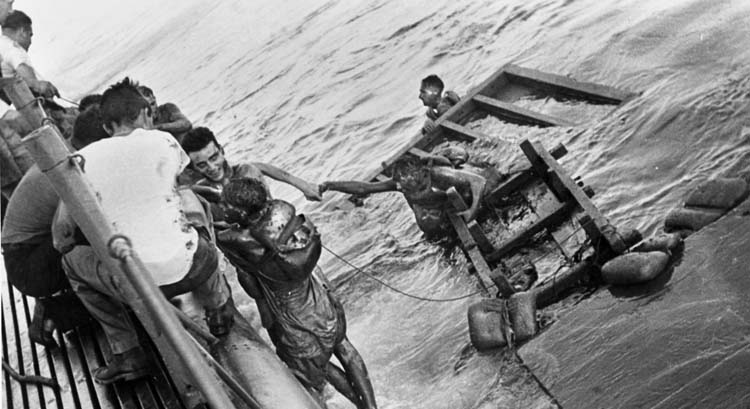
Running from the northern tip of Formosa, along the Ryukyu Islands, and up to Honshu was a strategic minefield planted by the Japanese to protect the Asian coast from a naval invasion from the east. An American attack by submarine, surface ships, or air, it was believed, would be difficult to execute under such hazardous conditions.
By noon on November 20, Kurita’s strike force had made its way into the Formosa Strait unimpeded. Kurita, and his prestigious passenger aboard Yamato, Vice Admiral Matome Ugaki—who until four days prior served as the commander of the First Battleship Division aboard Yamato—felt confident that the most dangerous part of the trek home was behind them. In just four days, the First Strike Force was scheduled to arrive in Japan.
Around midnight, Ugaki stood on the bridge of Yamato. He and those around him were concerned. Yamato’s radar had detected mysterious waves. The waves were shifting, and because of that, they were shifting the opinions of the officers. What the chances were of an American submarine penetrating the minefield, reaching the northern Formosa Strait, and then attacking a strike force of that size was a question the officers must have debated. The fashion in which the radar waves were moving and the unlikely chance that an American submarine, alone or in a wolf pack, could have penetrated that deeply gave every indication that Yamato’s radar had picked up patrolling American B-29s.
All ships in the First Strike Force had been warned of potential aircraft or submarine activity in their proximity but were told to keep moving forward. Kurita had made the decision to suspend zigzag movements, crank the engines, and bully their way home. Ugaki, a combat rear admiral, was comfortable with Kurita’s decision. With only a few hours until sunrise, Ugaki returned to his room to sleep, confident in the power of the First Strike Force, which comprised four escort destroyers and three battleships: Kongo, Nagato, and Yamato.
The USS Sealion Makes Radar Contact with the Japanese Naval Force
Within 15 minutes, Reich had returned to Sealion’s conning tower and found the sub closing in at 30,000 yards from what was now believed to be the enemy. The numerous yellow pips that continued to flash on the green radar screen were consistent with what the pips looked like when making contact with ships of considerable size. Reich confirmed that Sealion had made radar contact with a large Japanese naval force.
At 12:46 am on November 21, Reich called for battle stations and ordered communications officer Joe Bates to file a ship contact report. Bates rushed to the radio shack, but before he made the report, he jumped on the phone and called up to Reich, who was now on the bridge with the engineering officer, Harry Hagen. Bates, a cautious sailor, asked Reich to determine exactly how many ships and what type of ships he should report. Excited with the unfolding circumstances, Reich snapped back, “Dammit, Bates, Nimitz isn’t looking for an affidavit!”
Activity aboard Sealion was moving at a feverish pace as all men hurried to their battle stations, and whispers about the size of the target moved from bow to stern. Hornkohl shoved off from the radar and ran to the forward torpedo room where he joined forces with Chief Torpedoman Joe Bell and Torpedoman Third Class Bill Lavender. They were to make sure that all six bow tubes were ready to fire six Mark 18 torpedoes filled with 575 pounds of torpex.
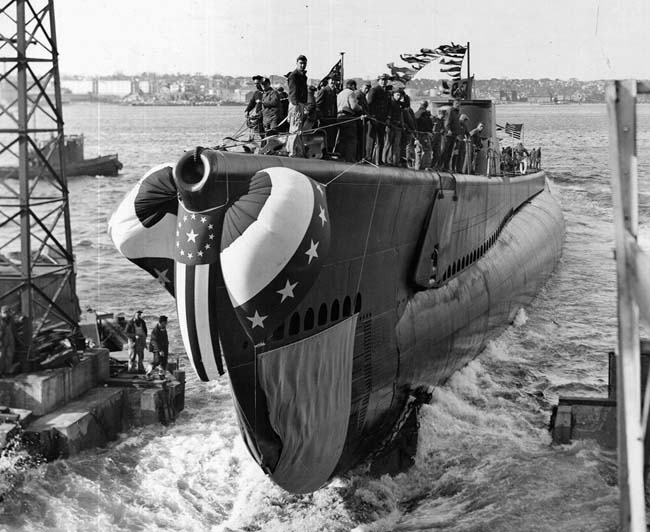
Bill Scarano, a boatswain’s mate from Groton, Connecticut—only a mile away from where the USS Sealion was built and launched—manned his station on the bow planes inside the control room. At his side was George Davis, who operated the stern planes. Chief of the Boat James Utz stood close by, ready to monitor the hull opening indicator panel, better known as the “Christmas tree” because of its green and red lights. The control room was ready for Reich to sound the klaxon alarm and submerge.
“Left Full Rudder!” The Sealion Closes in on its Prey
Diving the boat, however, was not what Reich decided to do. The Japanese strike force was moving at 17 knots—“a damn good speed”—and just shy of 20,000 yards away from the Sealion two hours after initial contact. The sub was closing at surface speed, but fighting the elements of the East China Sea made it all the more difficult. By 2 am, Reich and Hagen were windswept and soaked on the bridge, unable to identify anything in front of them.
Plagued by dense fog, the lookout, Quartermaster William Pierson, also struggled to see through the pitch black. If Sealion were to successfully execute an end run and maneuver itself in front of the strike force, it would be up to the men in the conning tower operating the attack scope, radar, and torpedo data computer.
“Looks like you’ve got good dope down there, Joe,” Reich reassured Joe Bates who was operating the torpedo data computer for the first time. Reich’s leadership was on full display.
“Left full rudder!” the skipper ordered the final turn.
At 2:45 am, Reich successfully maneuvered Sealion forward of the strike force and lay in wait for its prey. The energy in the conning tower was a mixture of excitement and anxiety, while outside on the bridge there was excitement and frustration. Reich and Hagen knew a major Japanese strike force was somewhere in front of them but no matter how tightly they squinted or how quickly they wiped the ocean spray out of their eyes, they simply could not see. Were they chasing a task force of aircraft carriers, battlewagons, or both, the crew wondered. Thornton and the officers around him in the conning tower were working feverishly, and the more they learned, the more the tension grew.
Executive Officer Jim Bryant, beloved by all on Sealion, kept his eyes glued to the attack scope and voiced his concern to Reich on the bridge. The destroyers on the port side of the main column were only a few thousand yards away from Sealion, and Bryant was dubious of running that close on the surface. But Reich would not waver. If Reich could not see the enemy, he was confident the enemy could not see him.
The fire control party in the conning tower was ready to fire, Bryant shouted up to Reich. It appeared to Reich that Bryant preferred firing from a safe distance but this would mean the risk of the torpedoes running erratically.
“Let me worry about that—we’ve got to close this guy!” Reich told Bryant. Even back in his Annapolis days, Reich was known to be a pugnacious fighter, and he proved that as he battled the winds and waves on the bridge, ordering Sealion closer. Reich was pushing his luck, and both he and Bryant knew it. “Three thousand five hundred yards for a torpedo run,” Bryant dutifully informed Reich.
At 2:50 am, Reich determined it was now or never. “As soon as you get your bow out, we’ll swing around 180 degrees and get the stern out. Just steady the solution,” he voiced to Bryant. The solution was all set as Joe Bates had the torpedo data computer working flawlessly. Moose Hornkohl was in the forward torpedo room and set the depth of the six fish at eight feet as Reich prescribed.
Reich yelled instructions down to Bryant and Bates in the conning tower. “All right, shoot when you’re ready…. You’re good to go…. Fire away!”
All Six Tin Fish in the Water, and the Whole Sky Lit Up
From a distance of 3,000 yards, the USS Sealion was ready to attack. Bryant shouted, “Fire six! Fire five! Fire four! Fire three! Fire two! Fire one!” as the firing circuits were pressed at 2:56 am. All six forward “tin fish” sprang from their tubes and ran hot, straight, and normal toward the second ship in the column: the battleship Kongo. “All six have been fired.”
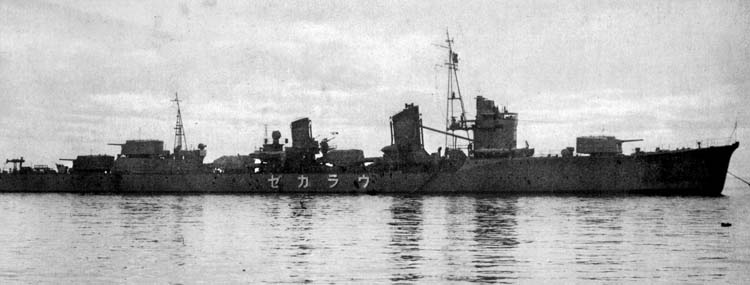
“Full right rudder!”
As Sealion turned hard to bring the stern into position, Pierson, a veteran of surface ships, cast his eyes on the Japanese battlewagon and was the first sailor aboard Sealion to identify the pagoda mast as that of the namesake of the Kongo-class battleship. Three minutes after the forward fish began their attack on the strike force, three stern tubes joined the assault and raced for the third ship in column—the battleship Nagato. Billy Mansfield and those running the engines slammed Sealion into flank speed away. With no fish in the tubes, one submarine would not last long on the surface amid three battleships and four destroyers fighting for their lives.
The conning tower roared at the sight before them.
“Woooo!”
“The whole sky lit up!”
“That’ll put ‘em in drydock!”
Yamamoto Takika, manning a 25mm gun aboard Kongo, jumped up from a dead sleep. He had heard the loud boom and his body vibrated as he felt and heard the grinding of steel. He instinctively knew that his ship had been hit by a submarine torpedo. In a mad dash across the deck of Kongo, Yamamoto ran for his 25mm gun mount. Yamamoto wondered why those already at the guns were firing into the sky. He was positive that the belly of Kongo had been punched with torpedoes from a submarine, not an aircraft.
Panic had taken over the minds of many aboard Kongo. Major Takahata Yutaka, the second battery officer aboard the ship, however, remained calm. Like Yamamoto, Takahata knew that Kongo had just been on the receiving end of a multiple punch combo by an enemy submarine. Although torpedoes had punctured the forward and middle sections of Kongo on the port side, he was still confident Kongo would stay afloat, regardless of the list that had already set in.
Kongo was a seasoned battleship, well built, and had endured close calls from American bombers before. Surely she would handle this latest attack. Kongo’s starboard escort, the destroyer Urakaze, was not so lucky. Upon seeing the flames and sea shoot above Kongo, the Nagato and Yamato responded quickly and spun hard on the helm.
Nagato and Yamato maneuvered quickly enough for Sealion’s stern torpedoes to miss them. At 3:04 am, Sealion’s stern torpedoes, now on the starboard side of the column, ripped through the side of Urakaze. The explosion sent up huge flames that illuminated the sky above the vessel and then quickly subsided. In a matter of seconds, the victim had slipped below the waves of the East China Sea to settle on the sea floor.
There was no time to search for survivors of Urakaze or slow down to help those struggling aboard Kongo. Because of the sudden explosion and sinking of Urakaze on the starboard side of Kongo, the strike force feared they had sailed into an ambush.
First the Urakaze, Now the Battlewagons
Admiral Kurita called for Yamato and Nagato to continue sailing at full speed north toward Japan. Kurita then ordered Kongo to head to a Japanese-held seaport city on the northeastern coast of Formosa. Escorted by the destroyers Isokaze and Hamakaze and still able to make 16 knots, Kongo was believed to have a reasonable chance of reaching the safety provided by Keelung’s harbor.
On Yamato, Admiral Ugaki, relieved that Kongo was doing as well as she was, thought the ship would survive. Under that assumption, Ugaki retired from the bridge of Yamato.
Aggravation was thick in Sealion’s conning tower, control room, and torpedo rooms. Below the conning tower, inside the control room, Scarano was listening to what he could through the open hatch. He could hear Reich’s lament: “I think I set the torpedoes too shallow!” Reich was right. Fired to run at a depth of only eight feet, the torpedoes swam into Kongo’s armor plate. While an eight-foot depth setting was appropriate for destroyer escorts, it was too shallow for battleships.
The distance between Kongo and the USS Sealion was widening and Reich was frustrated. “That was bad…. If you had fired on the last ship, you would have had a damn good setup,” Reich told Bryant.
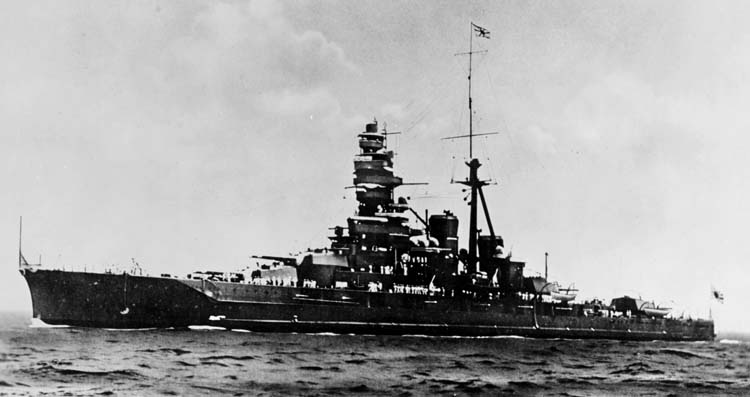
“I thought we were on the last one, Captain,” Bryant replied.
Sinking Urakaze was good, but Reich wanted the battlewagons. Had Sealion waited a bit longer, the fish that were buried in Urakaze could have been slammed through the hull of Yamato. Suddenly, Yamato, which had stopped zigzagging, cruised through the mist past Sealion’s stern 800 yards away, silhouetted against a pitch-black backdrop. If Sealion had had even one torpedo in the tube, Bates was confident that Yamato would have been impossible to miss.
Although the tubes were empty, there were still more fish on board. Through his headset, Moose Hornkohl, who was standing between the tubes in the forward torpedo room, heard the intensity in Reich’s voice: “I need those torpedoes ready now!”
Reich was not one to quit, and he loved a good fight.
A Desperate Push to Get Another Fish into Firing Position
Joe Bell, Bill Lavender, and Moose Hornkohl went to work. The forward tubes were now filled with seawater. Although this was normal, it was also a hindrance. When torpedoes were fired, the outer door of the torpedo tube opened to release the torpedo, but as the torpedo exits the tube, the seawater enters. To reload the torpedoes into the tubes, the reload crew had to pump the water back into the sea. But doing so in a situation such as the one Sealion was in would cost the sub precious time.
“I’d dump water from the tubes into the bilges,” Hornkohl suggested to his chief torpedoman, Joe Bell. Bell agreed. The forward torpedo room called the pump room and explained the situation. With very little time, there was only one option—pull the plug on the tubes. Dumping the water into the bilges was not ideal, as the bilges already held large amounts of water and oil and were carefully monitored. Stephen Gorski, a muscular man considered to be an auxiliary expert, ran the pump room and was well aware of the risk, and he had the pumps working as fast as possible.
When the water level gauge on the torpedo tubes read empty, Hornkohl and company began loading. The forward torpedo crew forced the torpedo skids into position and rigged the block and tackle on a ring inside the tube. Having hooked the torpedo to the block and tackle, the men were ready to shove the fish into firing position.
With the waves smashing against the sides of Sealion, the rocking motion of the boat made loading the fish far more dangerous than normal. Hornkohl feared being crushed to death between the deck and the 3,000-pound missile. “Don’t let that torpedo come back on us!” yelled Hornkohl. “I ain’t going to let it come back on you!” chirped Bell.
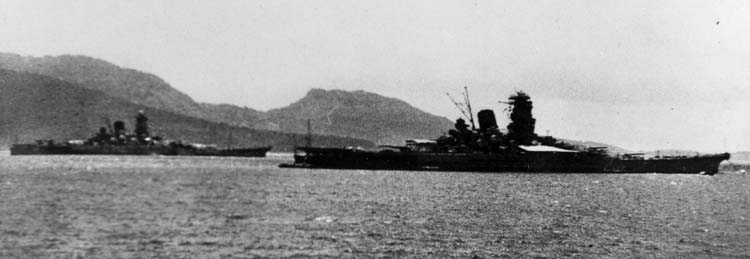
Hornkohl clambered onto the torpedo racks and shimmied himself behind the missile. With two hands on the skid, his backside in between, and two feet on the torpedo propellers, Hornkohl called for help. “Bill, push on me!”
Bill Lavender stood about 6’5” with a frame that resembled the underwater warhead. With their backs pressed against one another, Lavender used his weight and power and leaned into the back of Hornkohl, who was pushing directly on the torpedo. Together they pushed the fish into position.
“The Target has Stopped! She’s Dead in the Water!”
Moving as quickly as possible, Hornkohl had to be careful how much force was used to push the torpedo into place. Too much force ran the risk of shoving it over the stops and banging against the outer door and possibly damaging it. Four days prior, Fire Controlman George Davis had mistakenly fired a live torpedo through the outer door of Number 8 tube in the after-torpedo room, rendering the tube inoperable; a thin interior door was all that protected the USS Sealion from flooding and sinking to the seabed. One damaged torpedo tube was enough; Sealion couldn’t afford another.
“It’s on the stops, Joe!” Hornkohl yelled out to Bell with a sense of relief. Bell confirmed. Reinforced by Lavender, Moose and Bell guided the torpedoes into the forward tubes in less than half an hour. Six forward torpedoes were now ready for Reich to use at his disposal.
The clock read 4:06 am. More than an hour had passed since Reich heard the explosions and saw the plumes of smoke billowing from Kongo. Unfortunately for Reich and his crew, the battlewagon was zigzagging at a speed of 14 knots and appeared to be gaining.
Running at 25 percent overload, the engines of Sealion were pushing their limits. Throttleman Billy Mansfield, a submariner who had made nine war patrols prior to boarding Sealion, ran the forward engine room. Mansfield, Casey Mallough—the chief motor machinist’s mate—and Harry Hagen feared blowing the engines, and Reich wasn’t pleased with their caution. Begrudgingly, Reich listened to his engineering team and reduced Sealion’s speed from flank speed to roughly 17 knots.
Waves lapped over and against the sub’s hull and deck, and foamy green saltwater bathed the bridge and forced its way down into the conning tower through the open hatch. To finish off Kongo, Sealion had to stay on the surface. For Reich, the risk was worth the reward.
At 4:50 am, Danny Brooks and those around the radar screen identified two separate enemy formations and noted that the one nearest Sealion had slowed to 11 knots. Reich was told that the closest formation comprised one battleship and two destroyers. “Beginning to look rosy again,” thought Reich. It is reasonable to believe that the men in the conning tower knew what was happening: the battleship they had struck earlier could not keep up with the other two ships and her limp was worsening.
Using the same tactical approach that a pack of wolves uses when hunting their prey, Reich ordered the men in the conning tower to turn toward the enemy formation that had slowed. Bryant had his eyes against the scope and read out the bearings that Bates plugged into the torpedo data computer and fixed a solution. Clayton Brelsford plotted.
Thirty minutes after Brooks reported that the formation had reduced its speed, he shared more good news. The target was about 17,000 yards away and its pip on the radar screen was smaller in size than it had been only minutes before. At 5:20 am, Reich prepared to correct his earlier mistake.
Then came the words: “The target has stopped! She’s dead in the water!”
Kongo‘s Situation: Bad to Worse
Kongo was not doing as well as Ugaki and Kurita had hoped. Sealion’s Mark-18 fish had penetrated the walls of Kongo’s #6 and #8 boiler rooms, and the storm surge was exacerbating the wounds. The onslaught of seawater slowed Kongo, and the ship continued to list dangerously closer to capsizing.
Takahashi Masahiko, Kongo’s gunnery officer, stood by his antiaircraft gun and observed the lip of the waves getting closer. Kongo was listing at about 45 degrees and what had been 32 yards above the surface was now making contact with the water. Commander Suzuki and Captain Shimazaki worked with the other officers on board to mitigate the frightening situation. Pumping the water proved futile as the East China Sea bested each measure Kongo’s crew employed.
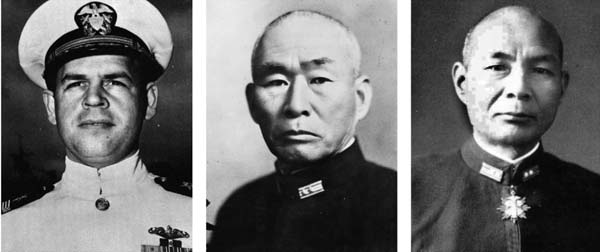
Dangerous as it was, the only other option was to patch the hole. As the damage-control officers dressed and readied themselves to slip over the side rail, Captain Shimazaki realized such an act was foolish. The damage officers were far more likely to drown in the raging sea than they were to patch the hole. Captain Shimazaki rescinded the order.
All men were ordered to Kongo’s starboard side. Even as they wondered if the aggregate weight of the sailors could counter the port list, their weight proved no match for the power of the sea. Soon after the command to rush starboard was given, Captain Shimazaki ordered the ship’s flag to be lowered.
Kongo now listed at 60 degrees. Capsizing was imminent.
After Kongo‘s Sinking, the USS Sealion Returns to its Pursuit
At 5:22 am, Captain Shimazaki ordered all hands to abandon ship. Two minutes later, the forward 14-inch shells in Kongo’s magazine compartment were knocked over and fell, detonator forward, toward the deck. There was an enormous blast.
Seconds later, Takahashi and Yamamoto were suddenly gasping for air, unsure of how they got where they were amid the waves of the East China Sea and unaware that more than 1,000 of their fellow sailors had just perished.
“Oh, the luck of the Irish!” Reich, a proud Irish Catholic, yelled in jubilation.
Shards of metal were being launched into the East China Sea. Even though there were still 90 minutes until sunrise, Reich watched as the flames from Kongo, so powerful and bright, illuminated the entire sky, turning night into day and quickly back into night again in just seconds. The ferocity of the explosion was so terrific that within one minute Brooks noted the radar pip had disappeared, making him wonder if the radar had broken.
“I can’t see it anymore.”
Scarano, still in the control room manning the bow planes, had resigned himself to death upon hearing and feeling the explosion. “We’re hit,” he thought. The concussion of the blast had jolted Sealion so badly that Scarano was convinced the sub had suffered a fatal shot to the hull.
Energy from the explosion grabbed loose papers and caps in Sealion’s conning tower and control room and scattered the materials in different rooms of the boat, littering the floors. Above Scarano, in the conning tower, the mood was far different as they were aware of the situation outside.
“Woooooo!” could be heard in the conning tower as the men celebrated upon realizing what had happened. “There’s a lot of white smoke out here,” Reich observed. “His boilers are going off.” Bates was relieved to hear his captain’s voice, because he feared Sealion’s bridge had been blown off the boat and assumed it had taken Reich for the ride.
Reich was alive and wasted no time. What was done was done. “All right, I’ll tell you what we’ll do.” Reich ordered Sealion to ignore Kongo’s escorts and instead turn to pursue the two battleships that had continued sailing north.
Typhoon-Force Winds Keep the Sealion from its Target
From 20,000 yards, it would be nearly impossible for Sealion to catch up because, by this time, the storm had assumed typhoon-like force. Within 15 minutes of Reich’s order, the radar had recorded Yamato and Nagato moving at 19 knots and 24,000 yards out. The size and power of the battlewagons were far better equipped to handle the severe weather conditions than Sealion.
Reich was not giving up, though. Sealion remained on the surface, being walloped by angry green waves, tossed left and right by the strengthening winds. There was another problem. Green water was running like a waterfall through the sub’s main induction shaft and making its way toward the engine room, recalled Scarano more than seven decades later. Down the conning tower hatch, the saltwater rushed into the conning tower, control room, and pump room. Six inches had pooled in the radio shack. Nevertheless, Reich did not stop hunting. He wanted what he knew he had missed.
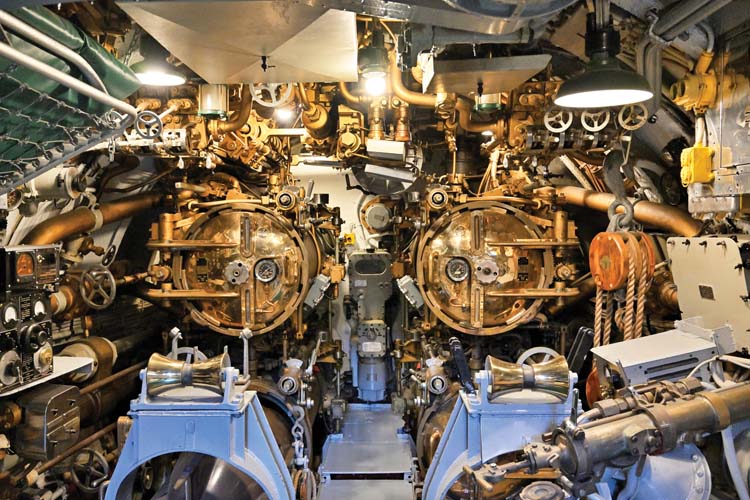
After two hours, however, Reich had had enough. Water damage to the circuit panels in the control room and pump room and damage to the engines were a far more likely outcome than taking down two more battleships 35,000 yards—nearly 20 miles—away. At 7:44 am, Sealion submerged.
Was the USS Sealion the Only American Submarine to Sink an Enemy Battleship? They’d Have to Prove it.
For the remainder of the day, Sealion stayed below the surface while the crew mopped up the soaked interior and patiently waited for a response from Admiral Charles Lockwood, commander of Submarine Force Pacific Fleet, who was stationed thousands of miles away at Pearl Harbor. Soon after the attack, Reich had issued a report to Lockwood to update him on what had just transpired along the edge of the Formosa Strait and East China Sea.
Surprisingly, Sealion had been able to pick up a radio station on the shore of Australia, which forwarded the message to Pearl. Lockwood responded with alacrity, and Reich received his response the following morning, November 22.
If Reich and Sealion wanted credit for being the only American submarine to sink an enemy battleship, they were going to have to prove they had done so. Despite the explosion, there was still a possibility Japanese sailors aboard Kongo had survived, so Lockwood ordered Reich to return to the area and scoop up a survivor if possible. At 5:50 am, Reich ordered Sealion to run on the surface and head back to the coordinates where Kongo had been obliterated.
Alone on the surface, surrounded by a vast expanse of sea and sunlight, Sealion prowled the waters looking for any piece of flotsam that could identify the sunken ship as Kongo. The sun burned brightly that afternoon and provided Sealion ample light to look for life or activity.
At 12:30 pm, the lookouts on the bridge called out. They saw something. Approximately four miles away, as clear as the blue sky above them, the Japanese were thought to be in sight. But there was no floating wreckage or bobbing heads or lifeboats. Instead, Sealion’s lookouts had spotted two potential Japanese Nell bombers, fully equipped with machine guns and cannons, closing fast on Sealion’s starboard quarter.
Capable of flying at 230 miles per hour, the Nell bombers could be on top of Sealion before the boat had submerged deep enough to avoid Japanese firepower.
B-25s Overehead, or Japanese Nells?
Clayton Brelsford, a more than capable officer who relieved the deck watch 30 minutes prior to the aircraft contact, appeared cavalier about the sighting. Rather than do what all submarine officers were taught to do when making contact with unidentified or enemy air patrol close by—dive the boat—Brelsford called for the SD radar to be turned on.
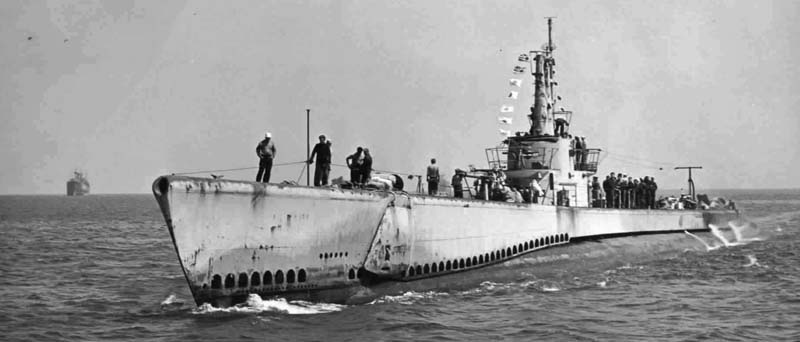
Why Brelsford approached the situation as he did is difficult to understand, for the SD radar was one of the earlier air search detection devices installed in the American fleet submarines and often proved to provide more frustration than protection.
Brelsford called Reich to inform him of the situation. Immediately Reich screamed, “Dive the damn boat!” Upon hearing the captain’s orders, Joe Bates, the diving officer on duty, called for Sealion to dive. Only luck would allow the sub to make it to periscope depth before taking a bomb directly on the hull. Excited by the command, Bates ordered the dive at an extreme angle.
Soon after Sealion began its steep descent into the East China Sea, an air bubble made itself known in the bow buoyancy tank that ran along the sub’s exterior forward hull. From approximately 120 feet below the surface, with an air bubble in the buoyancy tank, Sealion shot back up to the surface.
Unable to correct the grave mistake before Sealion reached the surface, the bow of the boat emerged from beneath the waves, exposing her entire hull to the two bombers above. By itself, only 24 hours after its shining moment, Sealion had breached. “This is the works!” hollered Bates.
Frantic, Bates and those in the control room operating the diving mechanisms worked with due speed to get Sealion back below the surface. Quietly, Bates had anticipated death. Ninety seconds would pass before Sealion could recover from its near-fatal error. Like a lily pad in a pond, Sealion sat on the surface as the bombers circled overhead. Where was the explosion and impending death that all combat submariners had imagined at least once? Men aboard prayed.
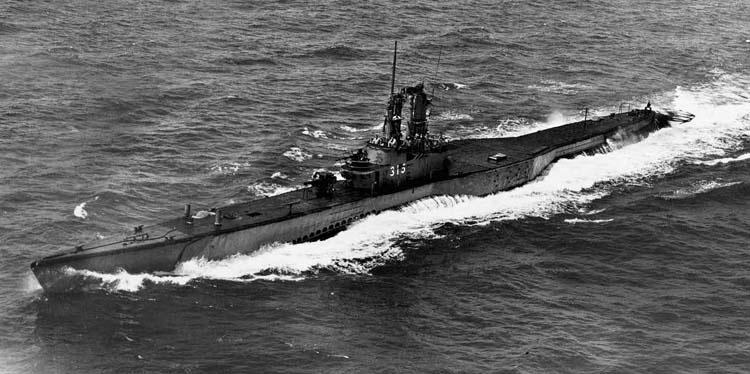
After the longest 90 seconds many of these men would ever endure, Sealion finally slipped beneath the waves, miraculously unscathed. At 150 feet below the surface, Sealion trimmed, while some aboard questioned why they had been spared. Chief Boatswain Mate Henry Joyce believed it was divine intervention. Only by the grace of God had they survived, he thought.
Reich and his officers had more on their minds than prayer. They needed to ascertain what had just happened and who was above them: friend or foe. Reich ordered the boat to periscope depth—60 feet—and he, Brelsford, and Bates took turns examining the circling bombers through Sealion’s periscope.
Brelsford argued that the bombers had to be American B-25s. There had been word that planes would be patrolling the area and looking for evidence of the reported sinking of Kongo. A battleship of that size sitting on the ocean floor only 250-300 feet below the surface could be spotted from above on a clear day. If the planes circling overhead were Japanese bombers, reasoned Brelsford, the men aboard Sealion would not still be alive to argue.
Reich passively agreed with Brelsford and thought about surfacing. Bates was perplexed. There was absolutely no reason for questioning who was flying those bombers, thought Bates. He argued that Formosa and China were too close and the Philippines too far to have B-25s casually patrolling above. Having deliberated for a while, Reich sided with Bates. Further examination confirmed that the two bombers were indeed Japanese Nells.
An Ignominious End for the USS Sealion
Ordered to a depth of 100 feet, Sealion cleared the area and spent the day patrolling, hoping to find any evidence that would help establish Sealion as the only American submarine to sink an enemy battleship. That day’s search proved fruitless.
Throughout the following day, Sealion’s officers and crew gathered around the mess tables and gave thanks for what they had achieved and survived throughout the previous 48 hours. Thursday, November 23, 1944, was the first time the crew of Sealion had celebrated Thanksgiving together.
All were thankful for simply being alive. They ate the roasted turkey, indulged in warm pumpkin pie, and spent a mindless 86 minutes watching the 1942 Hollywood drama starring the beautiful Jean Rogers, The War Against Mrs. Hadley.
Back in Pearl Harbor, the high brass was able, through intelligence intercepts, to confirm Sealion’s stunning victory over Kongo. Admiral Charles Lockwood was thankful for what he referred to as a “historic patrol.” Admiral Chester Nimitz was so thankful for Sealion’s “extraordinary heroism” and for the tremendous feat of achieving the only enemy battleship kill by an American submarine that he awarded Eli Thomas Reich his third Navy Cross in as many patrols. Less than one year later, on October 10, 1945, President Harry Truman awarded the Presidential Unit Citation to the entire crew of USS Sealion.
The submarine and her crew survived the war, but her end was ignominious. She was decommissioned and then recommissioned to serve in several postwar roles, and was later used for target practice. USS Sealion was ultimately sunk off the coast of Newport, Rhode Island, on November 8, 1978, gone but far from forgotten.
